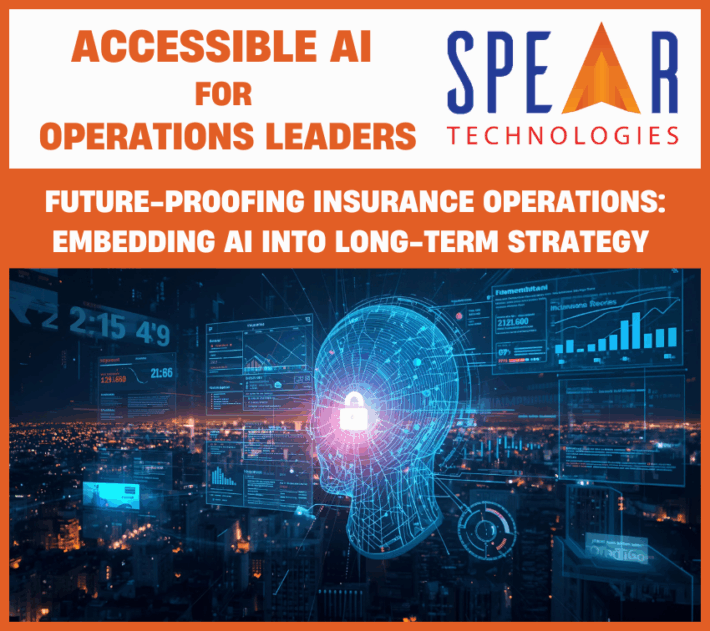Accessible AI for IT Leaders: Scaling Secure Vendor Interactions with Virtual Agents

For IT leaders in insurance, the stakes have never been higher. Legacy claims systems, siloed data flows, and fragmented vendor ecosystems stretch resources thin. Each new integration, partner portal, or third-party connection creates another dependency to maintain—while business users continue to request faster data access, automation, and transparency.
In our last article, Accessible AI for IT Leaders: Intelligent Document Processing—Reducing Technical Debt and Vendor Reliance, we explored how Accessible AI helps IT teams modernize document handling without introducing brittle OCR projects or costly vendor lock-ins.
In this next installment, we turn to another critical challenge: how to scale vendor and partner interactions securely and efficiently with AI-powered virtual agents.
Why Vendor Scalability Challenges IT Teams
In most property & casualty insurers, IT leaders oversee hundreds of vendor touchpoints—from repair networks and medical bill reviewers to litigation partners and technology providers. Each requires access to data, status updates, and reports, often generating repetitive support tickets, API requests, or manual extracts.
The result?
- Support backlogs grow as IT fields redundant data or access requests.
- Security risks increase as integrations multiply without centralized oversight.
- Costs rise as teams expand infrastructure to handle growing vendor complexity.
AI-powered virtual agents offer a scalable alternative—automating common requests, validating data, and providing secure, role-based access to the information vendors and partners need, without expanding IT workloads.
How Virtual Agents Transform Vendor and Partner Interactions
Accessible AI platforms such as SpearClaims™ allow insurers to deploy AI-driven virtual agents that act as intelligent intermediaries between systems, users, and vendors.
These agents can:
- Handle routine vendor inquiries automatically—such as claim status, document verification, or invoice reconciliation.
- Provide controlled self-service access for partners through secure, auditable channels.
- Trigger real-time updates to vendors without requiring API maintenance or manual emails.
- Reduce IT support tickets tied to repetitive integration requests or permissions management.
For example, when a repair shop or medical billing vendor requests claim updates, a virtual agent can securely respond using predefined business rules—eliminating human follow-up while maintaining full audit traceability.
The outcome: faster responses, fewer system dependencies, and a better experience for external partners.
Empowering Business Users with AI They Can Shape
Before diving deeper into virtual agents, it’s important to revisit the foundation of Accessible AI. At the core of every use case in this series—including vendor automation—is the idea that AI must be usable and adaptable by business leaders themselves.
If you’ve read the first few articles, this will be a refresher. If you’re joining us here, it’s essential context.
One of the most transformative aspects of accessible AI in insurance is the shift from developer-led to business-led model interaction. In traditional setups, any customization or retraining of AI models requires intervention from IT teams, data scientists, or external vendors. This dependency creates bottlenecks, slows innovation, and disconnects model development from those who understand the business problems best—your underwriters, claims adjusters, fraud investigators, and customer experience teams.
Why Business-User Accessibility Is a Game-Changer
When AI tools are designed for business users, the result is more responsive, agile, and relevant model development. Empowering business users to adapt and train AI models on their own yields multiple advantages:
- Faster Time-to-Value: No waiting on IT backlogs or vendor response times
- Higher Accuracy: Models reflect real-world operational needs and are continually refined by domain experts
- Greater Adoption: Tools that align with existing workflows and skill sets see higher engagement
- Scalable Innovation: Business teams become active participants in digital transformation, not passive consumers
Some Tangible Benefits to Empowering IT and Business Teams
The numbers demonstrate the measurable value of AI-enabled scalability and automation for IT operations:
- Operational Savings: Reducing repetitive vendor tickets and manual data pulls can cut IT support workloads by up to 35%.
- Integration Efficiency: Streamlining API management and partner access reduces maintenance hours by 25–40%.
- Infrastructure Cost Avoidance: Virtual agents deliver scalability without the need for additional servers or outsourced support—saving an estimated 20–30% in annual infrastructure spend.
- Faster Vendor Response Times: Automated self-service tools can resolve up to 60% of partner inquiries instantly, improving vendor satisfaction and cycle efficiency.
With these outcomes in reach, IT leaders can move from reactive support to proactive enablement—turning vendor complexity into a competitive advantage.
Case Study: Reducing IT Backlog and Improving Partner Experience
One A mid-size carrier’s IT department struggled to manage vendor requests for claim data and status updates. Each integration required custom code, frequent ticketing, and manual follow-ups.
By implementing Accessible AI Virtual Agents, the carrier:
- Automated 70% of vendor status requests through secure self-service portals.
- Reduced monthly integration tickets by 40%.
- Eliminated multiple one-off API maintenance tasks through centralized orchestration.
- Improved partner satisfaction scores while maintaining audit-ready security controls.
The result: faster response times, less IT fatigue, and improved data governance across the vendor ecosystem.
Why It Matters for IT Leadership
For IT executives, Accessible AI is not just about automation—it’s about control, scalability, and trust. Virtual agents allow teams to serve more partners with less effort, while maintaining visibility and compliance across every transaction.
- Fewer vendor dependencies and integration requests.
- Stronger governance and audit trails for all external data interactions.
- A scalable foundation for future automation and AI initiatives.
This is the promise of Accessible AI: technology that scales intelligently, not exponentially.
Next in the Series: In the next article in the Accessible AI for IT Leaders series, we’ll explore AI-Powered Fraud Detection and how IT leaders can balance advanced analytics with compliance, oversight, and operational efficiency.
Ready to see how SpearClaims™ can help your team do more with less?
Schedule a Demo to see how SpearClaims™ with accessible AI empowers IT leaders to scale securely, reduce vendor reliance, and deliver innovation without expanding infrastructure.
Request Pricing to learn how cost-effective it can be to simplify your technology landscape, manage partner integrations, and achieve scalable modernization.



